Publications
Our technology is featured in various prestigious scientific journals. To read more about our technology, please check out our featured publications below. You can also browse our Knowledge Base for detailed information on SERS, Raman Scattering etc. If you have any questions, feel free contact us using our contact form or give us a call.
LIMITED OFFER: Get 5 SERS Substrates worth €350 for free on your first order. Order SERS substrates now.
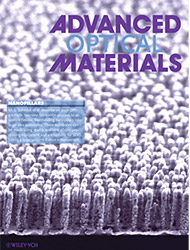
Large Area Fabrication of Leaning Silicon Nanopillars for Surface Enhanced Raman Spectroscopy
Application: Fabrication of SERS substrates
Citation: M. S. Schmidt, J. Hübner, and A. Boisen, Adv. Mater. 2012, 24, OP11-OP18
Summary: The paper presents a simple method for producing flexible, free-standing noble metal nanopillar structures for SERS applications. The nanopillars are fabricated from silicon and the resulting SERS substrates exhibit a remarkably large enhancement of the Raman signal due to analyte trapping.

Surface-Enhanced Raman Spectroscopy Based Quantitative Bioassay on Aptamer-Functionalized Nanopillars Using Large-Area Raman Mapping
Application: Detection of TAMRA-labeled vasopressin molecules
Citation: J. Yang, M. Palla, F. G. Bosco, T. Rindzevicius, T. S. Alstrøm, M. S. Schmidt, A. Boisen, J. Ju, and Q. Lin, ACS NANO 2013, 7, 5350-5359.
Summary: In this study, TAMRA-labeled vasopressin molecules in the picomolar regime (1 pM to 1 nM) are specifically captured by aptamers on the gold nanopillar SERS substrate and monitored by using an automated SERS signal mapping technique.
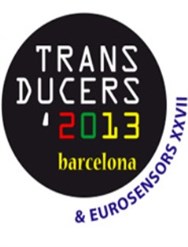
A Microfluidic surface enhanced Raman spectroscopy biosensor using aptamer functionalized nanopillars
Application: Detection of vasopressin molecules employing a microfluidics SERS set-up
Citation: J. Yang, M. Palla, F. G. Bosco, M. S. Schmidt, T. Rindzevicius, A. Boisen, J. Ju, Q. Lin, IEEE Transducers, 2013, 1799-1802
Summary: In a temperature controlled microchamber, aptamers immobilized on the gold nanopillar surface specifically recognize target molecules. The device demonstrates quatitative detection of vasopressin in the picomolar regime.
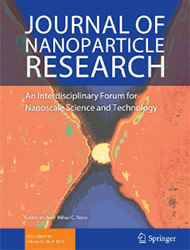
Synthesis and characterization of covalent diphenylalanine nanotube-folic acid conjugates
Application: SERS detection of folic acid (cancer related applications)
Citation: J. J. Castillo, T. Rindzevicius, K. Wu, M. S. Schmidt, K. A. Janik, A. Boisen, W. Svendsen, N. Rozlosnik, J. Castillo-León, J. Nanopart. Res., 2014, 16, 1-8
Summary: The paper presents a synthesis procedure to form diphenylalanine (PNT) and folic acid (FA) conjugates. The PNT-FA conjugate is a promising candidate for applications in the detection and diagnosis of cancer or tropical diseases such as leishmaniasis and as a carrier nanosystem delivering drugs to malignant tumors that overexpress folate receptors.
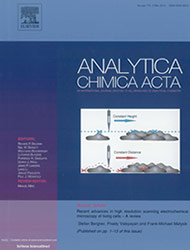
Non-labeling multiplex surface enhanced Raman scattering (SERS) detection of volatile organic compounds (VOCs)
Application: SERS detection of VOCs
Citation: C. L. Wonga, U.S. Dinisha, M. S. Schmidt, M. Olivoa, Anal. Chim. Acta, 2014, 844, 54-60
Summary: In this paper, we report multiplex SERS based VOCs detection with a leaning nano-pillar substrate. The VOCs analyte molecules adsorbed at the tips of the nano-pillars produced SERS signal due to the field enhancement occurring at the localized surface plasmon hot spots between adjacent leaning nano-pillars.
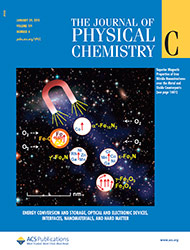
Wafer-Scale Leaning Silver Nanopillars for Molecular Detection at Ultra-Low Concentrations
Application: Wafer-scale SERS substrates
Citation: K. Wu, T. Rindzevicius, M. S. Schmidt, K. Bo Mogensen, A. Hakonen, and A. Boisen, J. Phys. Chem. C, 2015, 119, 2053-2062
Summary: Wafer-scale surface-enhanced Raman scattering (SERS) substrates fabricated using maskless lithography are important for scalable production targets. Large-area, leaning silver-capped silicon nanopillar (Ag NP) structures suitable for SERS molecular detection at extremely low analyte concentrations are presented.
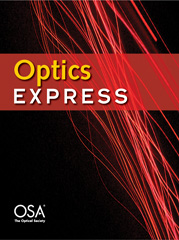
Plasmon resonances of Ag capped Si nanopillars fabricated using mask-less lithography
Application: Optical properties of Ag-capped Si nanopillar structures
Citation: K. Wu, T. Rindzevicius, M. S. Schmidt, K. Bo Mogensen, S. Xiao, and A. Boisen, OPTICS EXPRESS, 2015, 23, 12965-12978
Summary: Localized surface plasmon resonances (LSPR) and plasmon coupling in Ag capped Si nanopillar structures are studied using 3D FEM simulations and dark-field scattering microscopy.
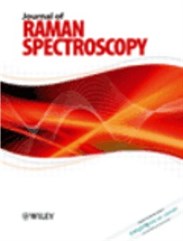
Silver-capped silicon nanopillar platforms for adsorption studies of folic acid using surface enhanced Raman spectroscopy and density functional theory
Application: SERS and DFT of folic acid molecule
Citation: J. J. Castillo, T. Rindzevicius, K. Wu, C. E. Rozo, M. S. Schmidt, and A. Boisen, J. Raman Spectrosc., 2015, 46, 1087-1094
Summary: The paper presents a study of the adsorption of FA on silver-capped silicon nanopillar substrates employing surface enhanced Raman scattering spectroscopy and density functional theory calculations.
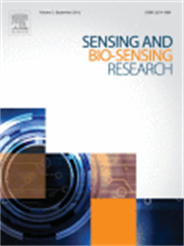
Towards quantitative SERS detection of hydrogen cyanide at ppb level for human breath analysis
Application: SERS-based detection of HCN
Citation: R. K. Lauridsen, T. Rindzevicius, S. Molin, H. K. Johansen, R. W. Berg, T. S. Alstrøm, K. Almdal, F. Larsen, M. S. Schmidt, and A. Boisen, Sensing and Bio-Sensing Research, 2015, 5, 84-89
Summary: Lung infections with Pseudomonas aeruginosa (PA) is the most common cause of morbidity and mortality in cystic fibrosis (CF) patients. Hydrogen cyanide (HCN) at ppb level has been reported to be a PA biomarker. For early PA detection in CF children not yet chronically lung infected a non-invasive SERS-based breath nanosensor is being developed.
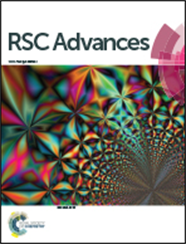
Mathematical Model for Biomolecular Quantification Using Large-Area Surface-Enhanced Raman Spectroscopy Mapping
Application: SERS signal mapping: biomolecular quantification
Citation: M. Palla, F. G. Bosco, J. Yang, T. Rindzevicius, T. S. Alstrøm, M. S. Schmidt, Q. Lin, J. Ju, A. Boisen, RSC Advances, 2015, 5, 85845-85853
Summary: A mathematical model to predict experimental SERS signal intensity distributions of target molecules on receptor functionalized nanopillar substrates for biomolecular quantification is presented. Our general theoretical framework agrees with the experimental data particularly well in the picomolar concentration regimes.
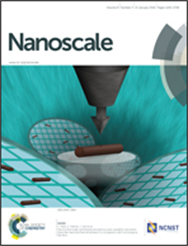
Detection of nerve gases using surface-enhanced Raman scattering substrates with high droplet adhesion
Application: SERS-based detection of two nerve gases, VX and Tabun
Citation: A. Hakonen, T. Rindzevicius, M. S. Schmidt, P. O. Andersson, L. Juhlin, M. Svedendahl, A. Boisen, and M. Käll, Nanoscale, 2016, 8, 1305-1308
Summary:Here we demonstrate that surface-enhanced Raman scattering (SERS) can be used for sensitive detection of femtomol quantities of two nerve gases, VX and Tabun, using a handheld Raman device and SERS substrates consisting of flexible gold-covered Si nanopillars.

DNA self-assembly on graphene surface studied by SERS mapping
Application: The self-assembly of double-stranded DNA (dsDNA) segments on two variations of graphene surfaces is studied using SERS
Citation: S. Botti, A. Rufoloni, S. Laurenzi, S. Gay, T. Rindzevicius, M. S. Schmidt, M. G. Santonicola, Carbon, 2016, 109, 363-372
Summary: Results from the electrical impedance spectroscopy (EIS) analysis supported the SERS findings and confirmed that SERS mapping is a reliable method for a rapid monitoring of the procedures used to interface DNA with graphene surfaces.
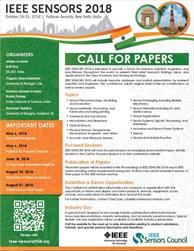
Click chemistry based biomolecular conjugation monitoring using surface-enhanced Raman spectroscopy mapping
Application: SERS based technique for monitoring the conjugation of small molecules by the well-known click reaction between an alkyne and azido moiety on the partner molecules
Citation: M. Palla, S. Kumar, Z. Li, S. Jockusch, J. J. Russo, J. Ju, F. G. Bosco, T. Rindzevicius, T. S. Alstrom, M. S. Schmidt, A. Boisen, IEEE Sensors, 2016
Summary:The principle is based on the loss of alkyne/azide Raman signal with triazole formation in the reaction as a function of time. These universal Raman reporter groups are specific for click reactions. This may facilitate applications in diverse areas such as bioconjugation or drug discovery.
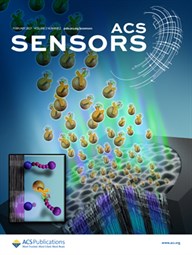
Hand-Held Femtogram Detection of Hazardous Picric Acid with Hydrophobic Ag Nanopillar SERS Substrates and Mechanism of Elasto-Capillarity
Application: SERS-based detection of picric acid (PA). PA is a severe environmental and security risk due to its unstable, toxic, and explosive properties.
Citation: A. Hakonen, F. Wang, P. O. Andersson, H. Wingfors, T. Rindzevicius, M. S. Schmidt, V. R. Soma, S. Xu, Y. Li, A. Boisen, H. Wu, ACS Sensors, 2017, 2, 198-202
Summary:A SERS PA detection limit on the order of 20 ppt was obtained, corresponding attomole amounts, which demonstrates that the presented approach is highly competitive for ultrasensitive analysis.
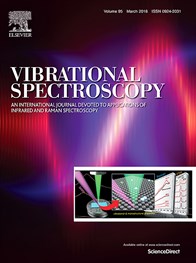
Detection of surface-linked polychlorinated biphenyls using surface-enhanced Raman scattering spectroscopy
Application: Analytical detection of toxic polychlorinated biphenyls (PCB) was possible using surface-enhanced Raman scattering (SERS) spectroscopy.
Citation: T. Rindzevicius, J. Barten, M. Vorobiev, M. S. Schmidt, J. J. Castillo, A. Boisen, Vibrational Spectroscopy, 2017, 90, 1-6
Summary:Significantly increased SERS signals for -SCH3 modified PCB77 while retaining most vibrational modes that characterize standard PCB77 were observed. Results point towards more efficient path for detecting different PCB congeners from real-life samples.
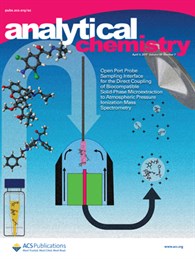
Surface Enhanced Raman Scattering for Quantification of p‑Coumaric Acid Produced by Escherichia coli
Application:SERS-based detection of p-coumaric acid in the supernatant of genetically engineered Escherichia coli (E.coli) cultures.
Citation: L. Morelli, K. Zor, C. B. Jendresen, T. Rindzevicius, M. S. Schmidt, A. T. Nielsen, A. Boisen, Analytical Chemistry, 2017, 89, 3981-3987
Summary:The difference in pHCA production yield between three genetically engineered E. coli strains was successfully evaluated using SERS and confirmed with high-performance liquid chromatography. As this novel approach has potential to be automated and parallelized.

SERS detection of the biomarker hydrogen cyanide from Pseudomonas aeruginosa cultures isolated from cystic fibrosis patients
Application: The P. aeruginosa biomarker hydrogen cyanide (HCN) was detected using SERS from cystic fibrosis patients.
Citation: R. K. Lauridsen, L. M. Sommer, H. K. Johansen, T. Rindzevicius, S. Molin, L. Jelsbak, S. B. Engelsen, A. Boisen, Scientific Reports, 2017, 7, 45264
Summary:Four P. aeruginosa reference strains and 12 clinical P. aeruginosa strains isolated from CF children were evaluated, and HCN was detected from overnight cultures of all wild type-like isolates and half of the later isolates from the same patients.
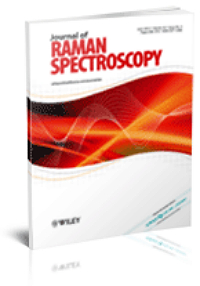
Optimizing silver‐capped silicon nanopillars to simultaneously realize macroscopic, practical‐level SERS signal reproducibility and high enhancement at low costs
Application:The reported SERS uniformity (~2.5% RSD in millimeter scale) is the best to date measured on large‐area solid SERS substrates.
Citation: K. Wu, T. Rindzevicius, M. S. Schmidt, A. H. Thilsted, A. Boisen, Journal of Raman Spectroscopy, 2017, 48, 1808-1818
Summary:Achieving simultaneously macroscopic, practical‐level SERS signal reproducibility and high enhancement via a lithography‐free process is a notable advance towards industrialization of substrate‐based SERS sensors.
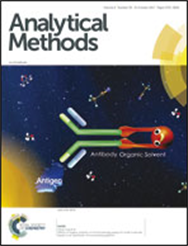
SERS spectroscopy for detection of hydrogen cyanide in breath from children colonised with P. aeruginosa
Application: P. aeruginosa biomarker hydrogen cyanide (HCN) was detected using SERS from cystic fibrosis patients.
Citation: R. K. Lauridsen, P.B. Skou, T. Rindzevicius, K. Wu, S. Molin, S. B. Engelsen, K. G. Nielsen, H. K. Johansen, A. Boisen, Analytical Methods, 2017, 9, 5757
Summary:It is concluded that SERS spectroscopy can be developed into an easy to use hypersensitive clinical prescreening method for detection of HCN in human breath.
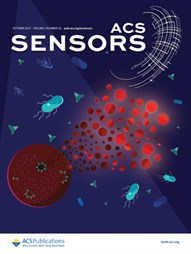
Nanopillar Filters for Surface-Enhanced Raman Spectroscopy
Application:Fast and facile extraction of a food adulterant (melamine) from a complex sample medium (milk) on a SERS substrate is demonstrated.
Citation: O. Durucan, T. Rindzevicius, M. S. Schmidt, M. Matteucci, A. Boisen, ACS Sensors, 2017, 2, 1400-1404
Summary:The work addresses issues related to SERS-based detection of analytes in complex media, which is important for realizing next generation SERS platforms applicable for a broad variety of real-life applications.
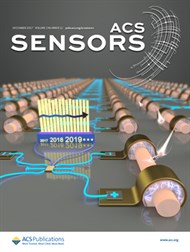
Large-Scale, Lithography-Free Production of Transparent Nanostructured Surface for Dual-Functional Electrochemical and SERS Sensing
Application:A dual-functional sensor that can perform surface-enhanced Raman spectroscopy(SERS) based identification and electrochemical (EC)quantification of analytes in liquid samples is presented.
Citation: K. Sanger, O. Durucan, K. Wu, A. H. Thilsted, A. Heiskanen, T. Rindzevicius, M. S. Schmidt, K. Zor, A. Boisen, ACS Sensors, 2017, 2, 1869-1875
Summary:Quantitative evaluation of paracetamol (PAR) ranging from 30 μM to 3 mM was realized through EC detection, and the presence of PAR was verified by its SERS fingerprint.
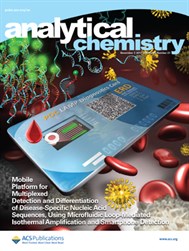
Quantitative Detection of Trace Level Cloxacillin in Food Samples Using Magnetic Molecularly Imprinted Polymer Extraction and Surface-Enhanced Raman Spectroscopy Nanopillars
Application:The work presents a new analytical method that combines magnetic molecularly imprinted polymer (MMIP)-based sample preparation with surface-enhanced Raman spectroscopy (SERS)-based detection for quantitative analysis of cloxacillin in pig serum.
Citation: J. Ashley, K. Wu, M. F. Hansen, M. S. Schmidt, A. Boisen, Y. Sun, Analytical Chemistry, 2017, 89, 11484-11490
Summary:The detection limit was 7.8 pmol. Cloxacillin recoveries from spiked pig plasma samples were found to be more than 80%.

Quantification of a bacterial secondary metabolite by SERS combined with SLM extraction for bioprocess monitoring
Application:Quantification of a bacterial secondary metabolite, p-coumaric acid (pHCA), produced by Escherichia coli using SERS.
Citation: L. Morelli, S. Z. Andreasen, C. B. Jendresen, A. T. Nielsen, J. Emneus, K. Zor, A. Boisen, Analyst, 2017, 142, 4553-4559
Summary: pHCA was quantified directly from the bacterial supernatant, distinguishing between various culture conditions based on the pHCA production yield. The obtained data showed good correlation with HPLC analysis.
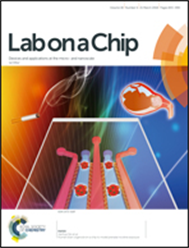
Injection molded lab-on-a-disc platform for screening of genetically modified E. coli using liquid–liquid extraction and surface enhanced Raman scattering
Application:The work presents an automated platform for detection of a secondary bacterial metabolite p-coumaric acid (pHCA) from bacterial supernatant.
Citation: L. Morelli, L. Serioli, F. A. Centorbi, C. B. Jendresen, M. Matteucci, O. Ilchenko, D. Demarchi, A. T. Nielsen, K. Zor, A. Boisen, Lab Chip, 2018, 18, 869
Summary:The obtained extraction efficiency of pHCA was comparable to values obtained in batch experiments and the SERS-based sensing showed a good correlation with HPLC analysis.